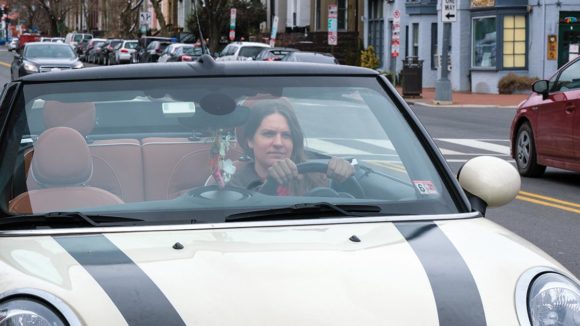CHARLOTTE, N.C. (AP) — The smaller, lighter vehicles that women more often drive, and the types of crashes they get into, may explain why they are much more likely to suffer a serious injury in a collision than men, a new study published Thursday found.
Researchers from the Insurance Institute for Highway Safety, a research group supported by auto insurers, looked into whether there was some sort of gender bias in the research into vehicle crashes or whether body type had anything to do with the injuries.
They analyzed injuries of men and women in police-reported tow-away front and side crashes from 1998 to 2015. Among the findings were that in front crashes, women were three times as likely to experience a broken bone, concussion or other moderate injury, and twice as likely to suffer a serious one like a collapsed lung or traumatic brain injury.
Men and women crashed in minivans and SUVs in about equal proportions, the researchers found. But around 70% of women crashed in cars, compared with about 60% of men. And more than 20% of men crashed in pickups, compared with less than 5% of women.
Men are also more likely to be driving the striking vehicle in two-vehicle front-to-rear and front-to-side crashes, according to the researchers.
“The numbers indicate that women more often drive smaller, lighter cars and that they’re more likely than men to be driving the struck vehicle in side-impact and front-into-rear crashes,” said Jessica Jermakian, IIHS vice president of vehicle research, in a statement. “Once you account for that, the difference in the odds of most injuries narrows dramatically.”
Women were also much more likely to suffer leg injuries compared to men, which may require car safety researchers to start building crash test dummies that account more for the physical differences between women and men, the researchers noted
The institute said the discrepancy in injury risk for men and women has prompted calls for new crash test dummies that better reflect how women’s bodies react to the forces of collisions and other changes to crash-testing programs. IIHS said it sought to shed more light on the issue and to see what kind of changes to its vehicle testing program might be warranted.
The study results are in line with previous research that shows serious and fatal injury risk has declined more for women than men as vehicles have gotten safer.
One explanation of the higher injury rates for women could be vehicle choice. Men and women crashed in minivans and SUVs in about equal proportions. However, around 70% of women crashed in cars, compared with about 60% of men. More than 20% of men crashed in pickups, compared with less than 5% of women. Within vehicle classes, men also tended to crash in heavier vehicles, which offer more protection in collisions.
In a separate analysis of data from the federal Fatality Analysis Reporting System, the researchers also found that in two-vehicle front-to-rear and front-to-side crashes, men are more likely to be driving the striking vehicle. Because the driver of the striking vehicle is at lower risk of injury than the struck vehicle in such crashes, this could also account for some of the differences in crash outcomes for men and women.
Photo courtesy of IIHS.
Was this article valuable?
Here are more articles you may enjoy.


 Insured Losses From Los Angeles Wildfires Rising: $8B to $20B
Insured Losses From Los Angeles Wildfires Rising: $8B to $20B  Southwest Air Faces US Lawsuit for ‘Chronic Flight Delays’
Southwest Air Faces US Lawsuit for ‘Chronic Flight Delays’  LA Wildfires Losses Could Top $30 Billion for Insurance Industry
LA Wildfires Losses Could Top $30 Billion for Insurance Industry  Mercury General Wildfire Losses Will Hit Reinsurance Cover. One Event?
Mercury General Wildfire Losses Will Hit Reinsurance Cover. One Event? 